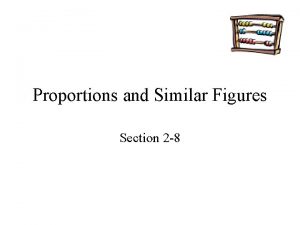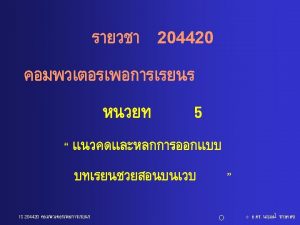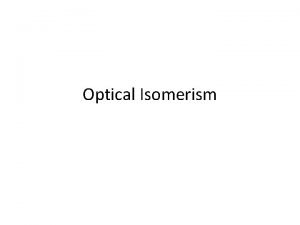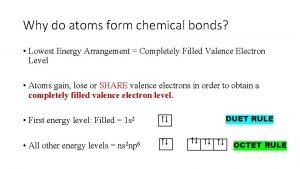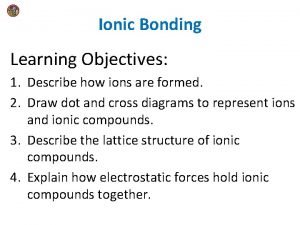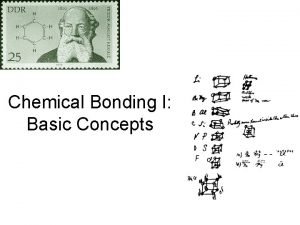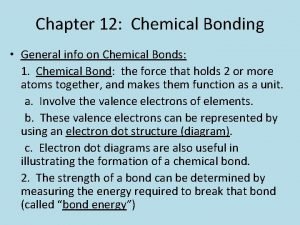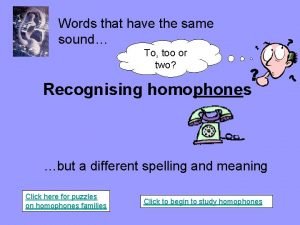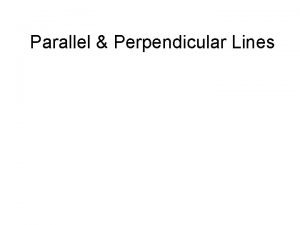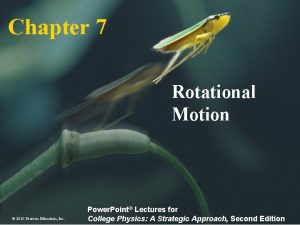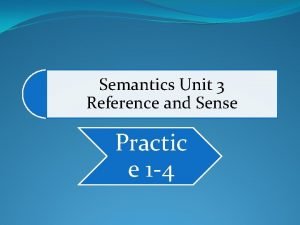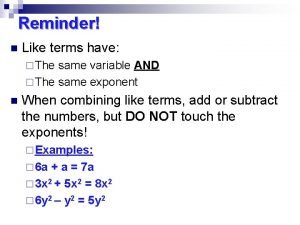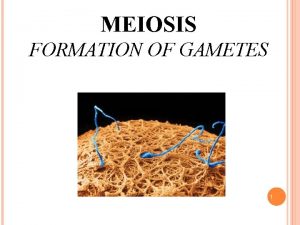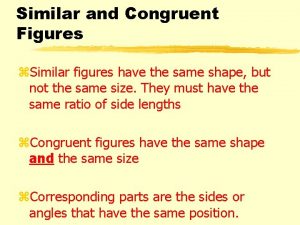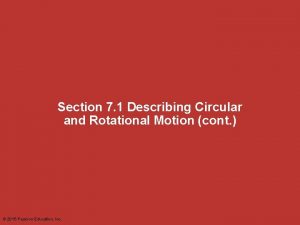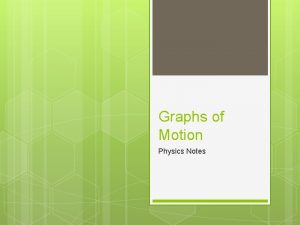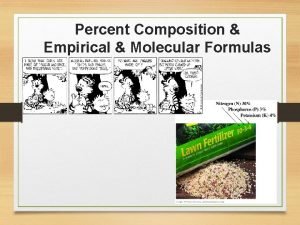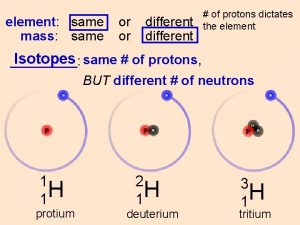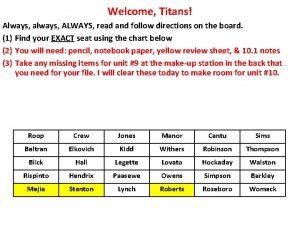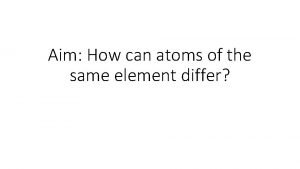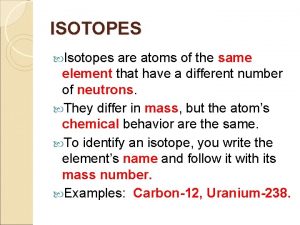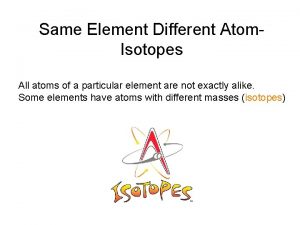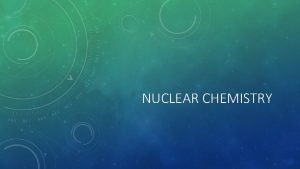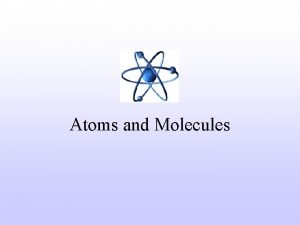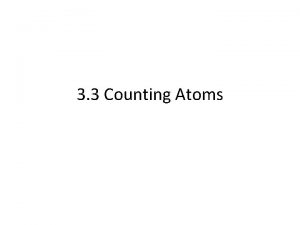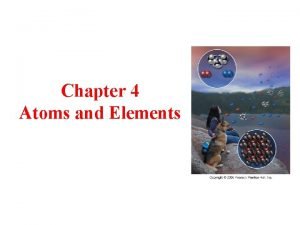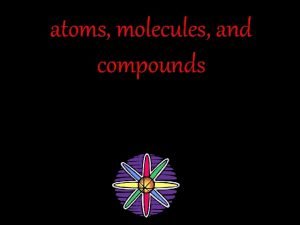1 Atoms of the same element always have

















































![The p. H Scale p. OH scale p. OH = log [OH ] p. The p. H Scale p. OH scale p. OH = log [OH ] p.](https://slidetodoc.com/presentation_image_h/ad5b8959850bd31d335cc0242fb2d59f/image-50.jpg)
![Practice Problem Calculate p. H for a solution that has [H+] = 1. 0 Practice Problem Calculate p. H for a solution that has [H+] = 1. 0](https://slidetodoc.com/presentation_image_h/ad5b8959850bd31d335cc0242fb2d59f/image-51.jpg)
![Practice Problem #2 Calculate p. H for a solution that has [OH-] = 1. Practice Problem #2 Calculate p. H for a solution that has [OH-] = 1.](https://slidetodoc.com/presentation_image_h/ad5b8959850bd31d335cc0242fb2d59f/image-52.jpg)
![Practice Problem #3 Calculate [OH-] for a solution that has a p. H = Practice Problem #3 Calculate [OH-] for a solution that has a p. H =](https://slidetodoc.com/presentation_image_h/ad5b8959850bd31d335cc0242fb2d59f/image-53.jpg)





- Slides: 58

1

Atoms of the same element always have the same number of protons, but they may have different numbers of neutrons. Isotopes 2

3

• The average atomic mass of an element is the weighted average mass of the mixture of an element’s isotopes. 4

Energy from Nuclear Reactions E=mc 2 Energy produced from the Nuclear Reaction Difference in mass between products and reactants Very Large Constant (Speed of Light)2 Because the constant is so large, tiny amounts of mass produce tons of energy Where does the energy come from ? In chemical reactions the energy comes from the bonds, In nuclear reactions the energy comes from the conversion of mass to energy 5

Detection of Radioactivity and the Concept of Half-life • 6 Half-life – time required for half of the original sample of radioactive nuclides to decay

Half-Life Practice l 7 Calculate how long it would take for 120 g of Radioactive Carbon-14 to decay to 15. 0 g if the half-life of Carbon-14 is 1 week (7 days).

Decay Practice 8

Alpha Decay Pra 9

Alpha Decay 10

Beta Decay 11

Beta Decay 12

l Which has the highest energy? – 13 Alpha, Beta, Gamma

l 14 Draw a Gamma particle.

Beta Fusion 0/-1 e + 232/91 Pa 15

Alpha Fission 16

Le Chatelier’s Principle 25 kj + N 2 O 4 (g) 2 NO 2 (g) 1. 2. 3. 4. 5. 6. 7. 17 8. (Ea) CHANGE: Addition of N 2 O 4 Addition of NO 2 Removal of N 2 O 4 Removal of NO 2 Decrease of container volume Increase of temperature Decrease of temperature SHIFT PREDICTION : Right Left Right Left Right Left

Measuring Pressure l Barometer – device that measures atmospheric pressure – Invented by Evangelista Torricelli in 1643 UNITS for Pressure 1 standard atmosphere = 1. 000 atm (Atmospheres) = 760. 0 mm Hg (millimeters Mercury) = 760. 0 torr (Names after Torricelli, Same as mm Hg) = 101, 325 Pa (Pascal) 18

Pressure and Volume: Boyle’s Law This graph has the shape of half of a hyperbola with an equation = k • PV Volume and pressure are inversely proportional. l – If one increases the other decreases. 19

Pressure and Volume: Boyle’s Law Another way of stating Boyle’s Law is P 1 V 1 = P 2 V 2 (constant temperature and amount of gas) 20

Volume and Temperature: Charles’s Law l These graphs are lines with an equation V = b. T (where T is in kelvins) • Volume and temperature are directly proportional. – If one increases the other increases. • Another way of stating Charles’s Law is V 1 = V 2 T 1 T 2 (constant pressure and amount of gas) 21

Volume and Moles: Avogadro’s Law 22

Volume and Moles: Avogadro’s Law • Volume and moles are directly proportional. – If one increases the other increases. – V = an – constant temperature and pressure • Another way of stating Avogadro’s Law is V 1 = V 2 n 1 n 2 (constant temperature and pressure) 23

The Super Combined Law Eliminate the Variables that are not changing!!! The left side represents the gas before 24 The right side represents the gas after

We can ignore any part of the equation that remains constant, so If temperature is constant: Boyle’s Law If pressure is constant: Charles’s Law And if volume is constant: 25

1. A gas occupies 12. 3 liters at a pressure of 40. 0 mm. Hg. What is the volume when the pressure is increased to 60. 0 mm. Hg? 26

2. Calculate the decrease in temperature when 2. 00 L at 20. 0 °C is compressed to 1. 00 L. 27

PV = n. RT P= pressure V= volume n = number of moles of the gas doesn’t change R = constant (0. 082058 L atm/mol K) doesn’t change T = temperature Use this equation to help you visualize what happens when you change one variable… 28

Pressure increases? P V = n. RT P V = n. R T or P V = n. R T Temperature must increase or volume decrease (or both) to keep the equation balanced! Temperature decreases? PV = n. RT or PV Pressure and/or volume will decrease. = n. RT 29

Dalton’s Law of Partial Pressures The pressure of the gas is affected by the number of particles. • The pressure is independent of the nature of the particles. 30

The Kinetic Molecular Theory of Gases - describes motion of ideal gases 31

Real Gases At high pressure the volume is decreased Molecule volumes become important Attractions become important 32

Practice At 27. 00 °C a gas has a volume of 6. 00 L. What will the volume be at 327. 0 °C? 33

Temperature 7 a What is temperature? Temperature is a measure of the average kinetic energy of molecular motion in a sample. ◦ In a hot sample, the molecules are moving much faster than in a cold sample. 34

Enthalpy (H): The amount of heat that a system can potentially give to other systems. If ∆Hrxn is positive the reaction is endothermic (it has absorbed energy) and if ∆Hrxn is negative, it is exothermic (and has given off energy). The enthalpy change that accompanies the heating/cooling of a pure substance is determined by the equation: ∆H = m. Cp∆T 35

ΔH – Heat of Reaction(ENTHALPY) Endothermic ◦ The products have more energy than the reactants. ◦ Heat must be put into the reaction, so ΔH is positive. 36

Exothermic ◦ The products have less energy than the reactants. ◦ Heat must be released from the reaction, so ΔH is negative. 37

Heat added here doesn’t change the temperature of the substance, it is causing the phase change. 38

Heat Flow Problems To calculate heat, use the following formula: Always given to you! ◦ Energy = mass * specific heat * temperature change 39

Calculations: Practice Problems If 200. 0 grams of water is heated from 70. 0° C to 100. 0° C to make a cup of 4. 184 J/g. C tea, how much heat must be added? Q = (m)(c)(ΔT) Joules 40

Energy as a Driving Force Entropy, S – function which keeps track of the tendency for the components of the universe to become disordered 41

Entropy is a thermodynamic measure of the randomness in the universe. Phase changes that result in greater molecular freedom have a positive ∆S, and those that result in less molecular freedom have a negative ∆S. Which one favors more Randomness? Example: For melting, ∆S = +, for freezing ∆S 42

Energy as a Driving Force Second law of thermodynamics – The entropy of the universe is always increasing. 43

Entropy Practice Which has a +∆S? ◦ Water Vapor Condensing or water vaporizing �Water Vaporizing – Forming a gas increases randomness Which has a -∆S? ◦ Ice melting or water freezing �Water Freezing – Solids do not move therefore there is a decrease in randomness of the particles 44

BrØnsted-Lowry Model of Acids and Bases 5 b Acids ◦ substances that are hydrogen-ion donors. HCl + H 2 O → Cl- + H+ acid Base hydrogen ion ◦ substances that are hydrogen-ion acceptors. NH 3 + H 2 O NH 4+ + OHbase Note: hydroxide ion According to the Bronsted ◦ acid/base are always added to water -Lowry Model, what is the definition of… An Acid? A Base? 45

The Bronsted-Lowry concept Cl H acid + O H H base + H HO + Cl H conjugate acid conjugate ba conjugate acid-base pairs 46

Practice problems Identify the acid, base, conjugate acid, conjugate base, and conjugate acid-base pairs: HC 2 H 3 O 2(aq) + H 2 O(l) C 2 H 3 O 2–(aq) + +(aq) conjugate base conjugate acid base H 3 O conjugate acid-base pairs OH –(aq) + HCO 3–(aq) CO 32–(aq) + H 2 O(l) base acid conjugate base conjugate acid-base pairs 47

More Practice (a) HF(aq) + SO 32–(aq) F–(aq) + HSO 3–(aq) conjugate base conjugate acid-base pairs (b) CO 32–(aq) + HC 2 H 3 O 2(aq) C 2 H 3 O 2–(aq) + HCO 3– base acid conjugate base conjugate acid (aq) (c) conjugate acid-base pairs H 3 PO 4(aq) + OCl –(aq) H 2 PO 4–(aq) + conjugate base conjugate acid base HOCl(aq) conjugate acid-base pairs 48

The p. H Scale The “p scale” is used to express small numbers. p. H = log [H+] 49
![The p H Scale p OH scale p OH log OH p The p. H Scale p. OH scale p. OH = log [OH ] p.](https://slidetodoc.com/presentation_image_h/ad5b8959850bd31d335cc0242fb2d59f/image-50.jpg)
The p. H Scale p. OH scale p. OH = log [OH ] p. H + p. OH = 14. 00 50
![Practice Problem Calculate p H for a solution that has H 1 0 Practice Problem Calculate p. H for a solution that has [H+] = 1. 0](https://slidetodoc.com/presentation_image_h/ad5b8959850bd31d335cc0242fb2d59f/image-51.jpg)
Practice Problem Calculate p. H for a solution that has [H+] = 1. 0 x 10 -9 M Step 1) [H+] = 1. 0 x 10 -9 M Step 2) -log (1. 0 x 10 -9 )= 9. 00 Step 3) p. H = 9. 00 51
![Practice Problem 2 Calculate p H for a solution that has OH 1 Practice Problem #2 Calculate p. H for a solution that has [OH-] = 1.](https://slidetodoc.com/presentation_image_h/ad5b8959850bd31d335cc0242fb2d59f/image-52.jpg)
Practice Problem #2 Calculate p. H for a solution that has [OH-] = 1. 0 x 10 -6 M. 1) Kw = [H+] [OH-] = 1. 0 x 10 -14 2) [H+] = 1. 0 x 10 -14 / [OH-] 3) [H+] = 1. 0 x 10 -14 / 1. 0 x 10 -6 = 1. 0 x 10 -8 M 4) -log 1. 0 x 10 -8 = 8. 00 5) p. H = 8. 00 52
![Practice Problem 3 Calculate OH for a solution that has a p H Practice Problem #3 Calculate [OH-] for a solution that has a p. H =](https://slidetodoc.com/presentation_image_h/ad5b8959850bd31d335cc0242fb2d59f/image-53.jpg)
Practice Problem #3 Calculate [OH-] for a solution that has a p. H = 6. 20 [OH-] = 1. 6 x 10 -8 53

Law of chemical equilibrium For a reaction of the type a. A + b. B � c. C + d. D – Equilibrium expression • Each set of equilibrium concentrations is called an equilibrium position. 54

Large values for K signify the reaction is “product favored” When equilibrium is achieved, most reactant has been converted to product 55

Small values for K signify the reaction is “reactant favored” When equilibrium is achieved, very little reactant has been converted to product 56

For the reaction: For the reaction 2 A + 3 B 4 C + 2 D Where K is the equilibrium constant, and is unitless 57

The Meaning of K – K > 1 the equilibrium position is far to the right – K < 1 the equilibrium position is far to the left 58
 Atoms always have
Atoms always have Similar
Similar Similar figures proportions
Similar figures proportions Periodic table regents
Periodic table regents Always low prices always
Always low prices always Why do we see the same side of the moon
Why do we see the same side of the moon Your romantic partner always uses the same shampoo
Your romantic partner always uses the same shampoo Your romantic partner always uses the same shampoo
Your romantic partner always uses the same shampoo Same place same time
Same place same time Same place same passion
Same place same passion Trans name
Trans name A block level element always starts on
A block level element always starts on It has 6 square surfaces and 12 edges
It has 6 square surfaces and 12 edges Why do atoms form chemical bonds? *
Why do atoms form chemical bonds? * Magnesium and fluorine ionic compound
Magnesium and fluorine ionic compound Valence electrons of xenon
Valence electrons of xenon What atoms can have an expanded octet
What atoms can have an expanded octet Metallic bonds occur between atoms of
Metallic bonds occur between atoms of Difference between data element and signal element
Difference between data element and signal element Signal element vs data element
Signal element vs data element The japanese have always loved fresh fish
The japanese have always loved fresh fish I have always enjoyed reading the book more than
I have always enjoyed reading the book more than They have always breakfast in bed
They have always breakfast in bed People have always polluted
People have always polluted Ive always been told
Ive always been told Same sound words
Same sound words Parallel lines slope
Parallel lines slope Do sister chromatids have the same alleles
Do sister chromatids have the same alleles Connotative and denotative meaning of warm
Connotative and denotative meaning of warm The four forces shown have the same strength
The four forces shown have the same strength Reference example in semantics
Reference example in semantics Terms that have the same variable
Terms that have the same variable Three facts about meiosis
Three facts about meiosis A car a bicycle a mouse and a bug have the same velocity
A car a bicycle a mouse and a bug have the same velocity Similar and congruent figures
Similar and congruent figures Which third force on the wheel
Which third force on the wheel Can twins be born with different hair colors
Can twins be born with different hair colors When two curves coincide the two objects have the same
When two curves coincide the two objects have the same Empirical formula of lactic acid
Empirical formula of lactic acid Hình ảnh bộ gõ cơ thể búng tay
Hình ảnh bộ gõ cơ thể búng tay Frameset trong html5
Frameset trong html5 Bổ thể
Bổ thể Tỉ lệ cơ thể trẻ em
Tỉ lệ cơ thể trẻ em Voi kéo gỗ như thế nào
Voi kéo gỗ như thế nào Chụp tư thế worms-breton
Chụp tư thế worms-breton Alleluia hat len nguoi oi
Alleluia hat len nguoi oi Các môn thể thao bắt đầu bằng tiếng đua
Các môn thể thao bắt đầu bằng tiếng đua Thế nào là hệ số cao nhất
Thế nào là hệ số cao nhất Các châu lục và đại dương trên thế giới
Các châu lục và đại dương trên thế giới Cong thức tính động năng
Cong thức tính động năng Trời xanh đây là của chúng ta thể thơ
Trời xanh đây là của chúng ta thể thơ Mật thư tọa độ 5x5
Mật thư tọa độ 5x5 Phép trừ bù
Phép trừ bù Phản ứng thế ankan
Phản ứng thế ankan Các châu lục và đại dương trên thế giới
Các châu lục và đại dương trên thế giới Thơ thất ngôn tứ tuyệt đường luật
Thơ thất ngôn tứ tuyệt đường luật Quá trình desamine hóa có thể tạo ra
Quá trình desamine hóa có thể tạo ra Một số thể thơ truyền thống
Một số thể thơ truyền thống Bàn tay mà dây bẩn
Bàn tay mà dây bẩn


